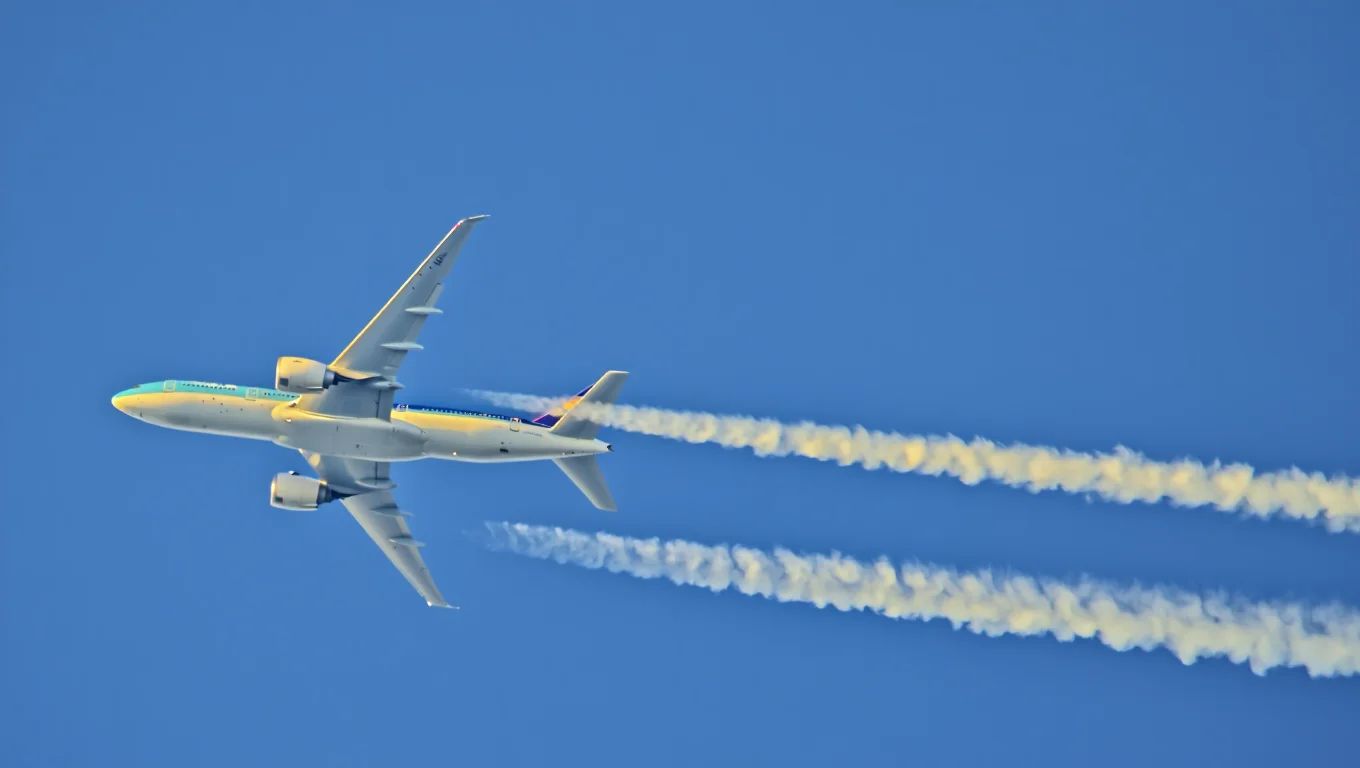Could commercial aircraft spread particles to cool the Earth? ✈️
Follow us on Google News (click on ☆)
Researchers from University College London modeled different strategies for injecting aerosols into the stratosphere. Contrary to popular belief, using existing aircraft like the Boeing 777F could be sufficient for operations near the poles.

The study, published in Earth's Future, shows that injecting sulfur dioxide at an altitude of 8 miles (13 km) could reduce global temperatures by 1.1°F (0.6°C). This approach, while less effective than higher-altitude methods, offers a more accessible solution.
This method could be deployed rapidly, avoiding the costs and delays associated with developing specialized aircraft. Risks such as acid rain increase with the amount of aerosols needed. Researchers emphasize the importance of continuing studies to fully understand this technique's impacts on climate.
The simulations used the UKESM1 model to evaluate the effectiveness of different injection strategies. Results suggest this approach could be an additional tool in the fight against climate change.
How does stratospheric aerosol injection work?
Stratospheric aerosol injection aims to mimic the effect of volcanic eruptions, which temporarily cool the planet. The particles reflect some solar radiation back into space.
This technique requires particles of the right size and at the right altitude to be effective. The stratosphere, being stable and dry, allows particles to persist for long periods.
The aerosols used, such as sulfur dioxide, form microscopic droplets. These scatter sunlight, thereby reducing the amount of heat reaching Earth's surface.
However, effectiveness depends on many factors, including injection altitude and geographic location. Particles must be maintained in the stratosphere for lasting impact.
What are the risks of solar geoengineering?
Solar geoengineering poses environmental and social risks. Among them, changes in precipitation patterns and acid rain are the most concerning.
Massive aerosol injection could disrupt existing climate patterns. This could lead to droughts or floods in certain regions of the world.
Ethical implications are also significant. Who would decide the desirable cooling level? How to ensure equity in global impacts?
Finally, this technique doesn't address the root cause of global warming. It might even delay efforts to reduce greenhouse gas emissions.